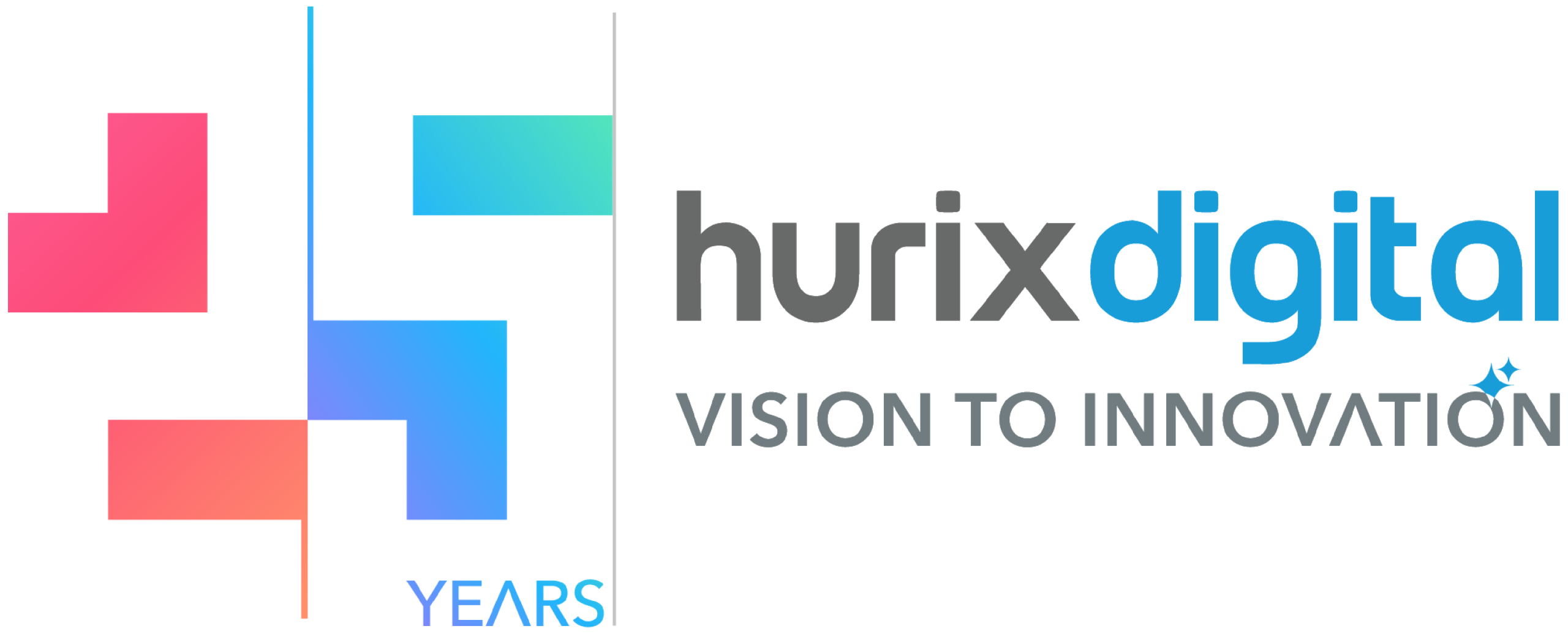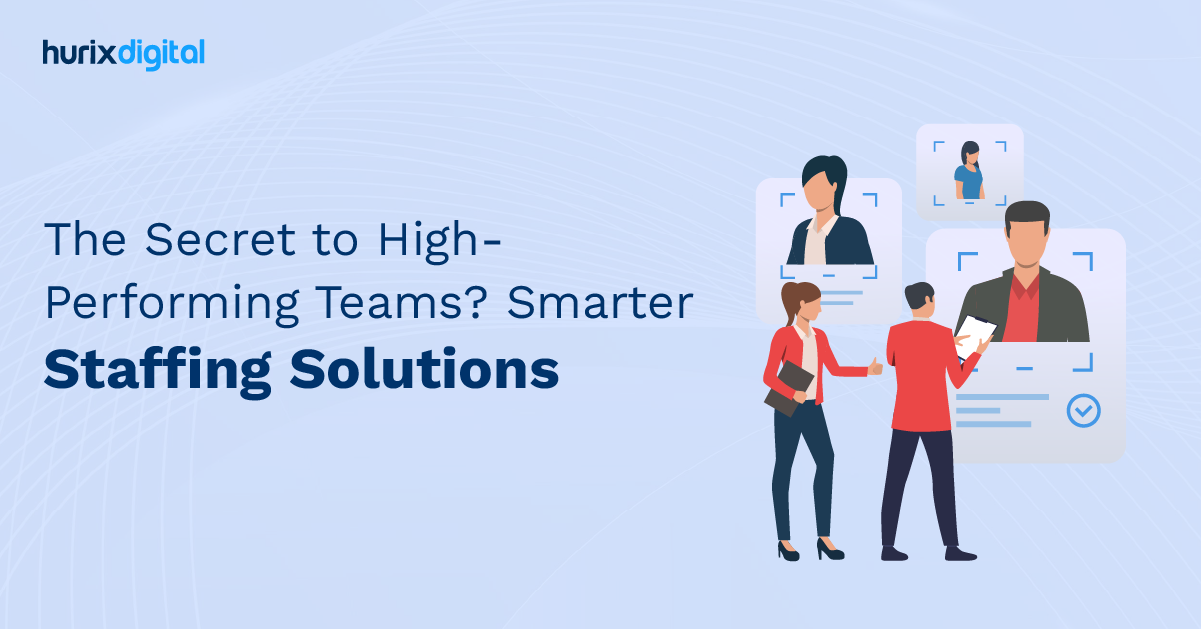
The Secret to High-Performing Teams? Smarter Staffing Solutions
Summarize with:
Employees are the backbone of any business, so companies that invest in them indirectly invest in their growth. Employee training and development are among the most crucial investments. Businesses that provide Learning and Development (L&D) programs enjoy a 24% greater profit margin than those that do not.
A non-negotiable for every business, staff training is the cornerstone of organizational growth and development. It plays a pivotal role in enhancing employee skills and knowledge, which, in turn, directly impacts an organization’s overall performance and competitiveness.
In this article, let’s delve into the significance of staff training and its far-reaching implications.
Table of Contents:
- Understanding Complete Staffing Solutions
- What are the Characteristics of a High-Performing Team?
- Understanding Turnover Rates
- Identifying the Root Causes
- The Importance of Staffing Solutions for Businesses
- How Staffing Solutions Drive Business Excellence?
- Top 5 Tips for Reducing Turnover Rates with Complete Staffing Solutions
- Considerations When Hiring a Staffing Company
- Five Tips to Evaluate the Efficacy of Staff Training
- Conclusion
Understanding Complete Staffing Solutions
Professional staffing agencies provide staffing solutions to help businesses find, attract, and retain talented staff.
These agencies offer various models for business staffing, including temporary staffing, permanent placements, contract staffing, and outsourcing specific tasks or projects. The primary objective of these services is to acquire talent timely and efficient manner, allowing businesses to scale seamlessly and achieve their goals.
The staffing and recruiting industry in the United States is substantial, with around 12,554 staffing and recruitment agencies as of 2023. This industry provides comprehensive solutions to businesses across various sectors, addressing the challenges posed by the ever-changing labor market.
What are the Characteristics of a High-Performing Team?
A high-performing team is a team that exhibits the following characteristics:
- Clear and Shared Vision: The team members clearly understand the project’s purpose, goals, and expectations, and they are committed to achieving them.
- Strong Decision-Making: The team can make informed and timely decisions based on data, logic, and consensus.
- High Skill Levels: They have the necessary technical and soft skills to perform their tasks effectively and efficiently.
- Work Ethic: In addition to delivering high-quality results, team members are dedicated, responsible, and accountable.
- Collaboration: The team members work together as a cohesive unit, sharing information, ideas, feedback, and supporting each other.
- Communication: Communication among team members is open, honest, and respectful.
- Trust: There’s trust amongst the members, as well as respect for each other’s opinions and expertise. They avoid conflicts and blame.
- Diversity: The team members have diverse skill sets, backgrounds, and perspectives, and they value and leverage their differences.
- Innovation: Each team member is creative, curious, and willing to try new things. They embrace change and challenges.
- Learning: The team is constantly learning, improving, and adapting, and they seek and provide feedback.
Understanding Turnover Rates
Employee turnover is the rate at which employees leave a company, necessitating replacements. High turnover can lead to increased costs, decreased morale, and workflow disruptions. On average, turnover rates in education are around 10% to 15%, with some sectors experiencing rates as high as 30%.
High turnover rates cause many issues, some of which are:
- Cost Implications: Recruitment and training expenses escalate due to the need for finding, attracting, and onboarding new employees, as well as orienting and training them.
- Morale Impact: The remaining employees may feel overburdened, leading to burnout and decreased job satisfaction. Team cohesion and camaraderie can also suffer.
- Operational Disruptions: Workflow efficiency may decrease due to project delays and the learning curve associated with new hires. The loss of institutional knowledge can further heighten these challenges.
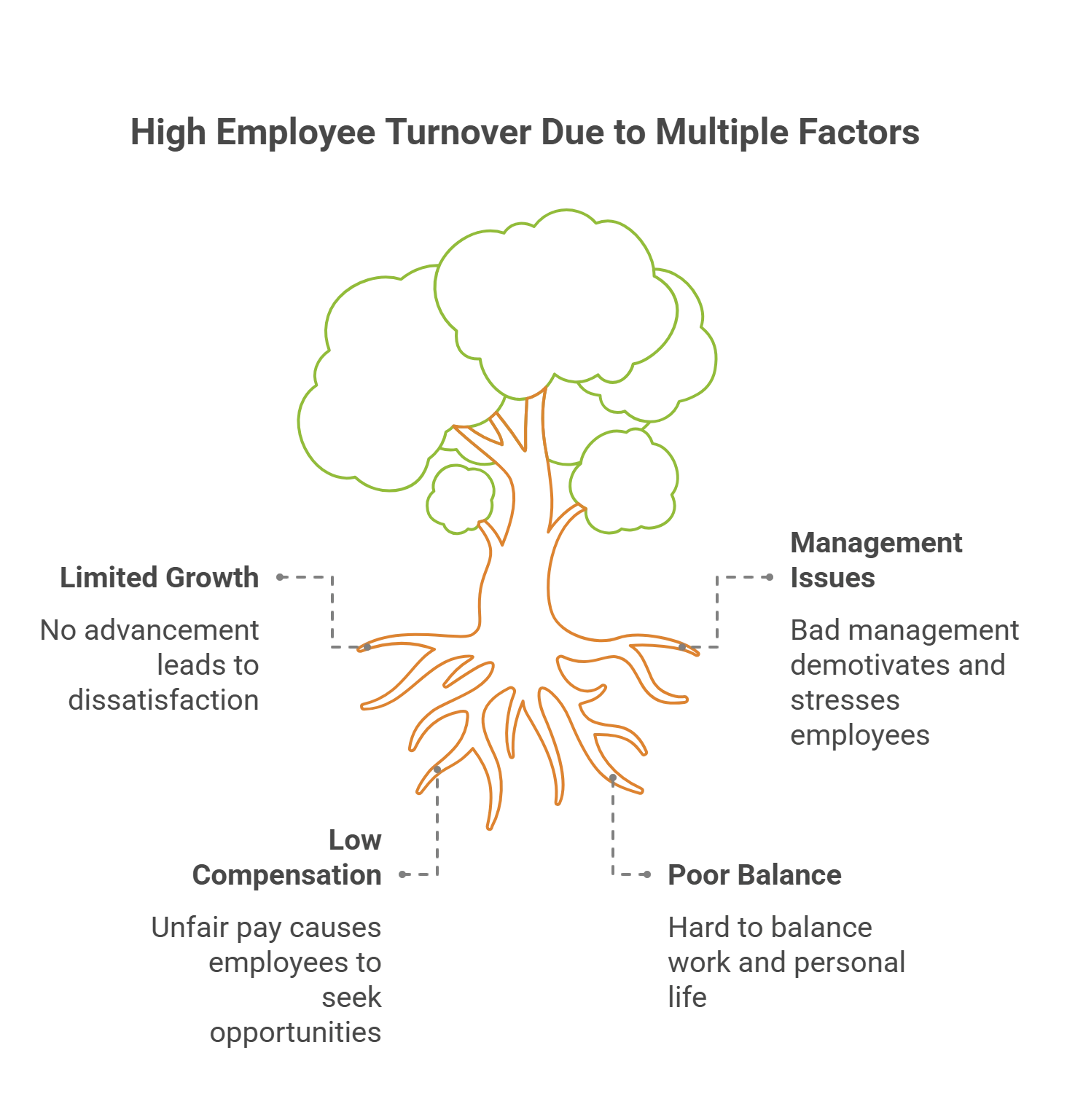
Identifying the Root Causes
To effectively combat high turnover rates, it is crucial to pinpoint the underlying reasons why employees choose to leave. The primary factors contributing to high turnover include:
1. Lack of Career Growth Opportunities
Employees seek advancement and development prospects to feel valued and motivated. Without clear paths for growth, employees may feel stagnant and seek opportunities elsewhere.
2. Poor Management Practices
Effective leadership is crucial for employee satisfaction and retention. Inadequate communication, lack of support, and unclear expectations can lead to disengagement.
3. Inadequate Compensation
Competitive salaries and benefits are essential for attracting and retaining top talent. Employees who feel undervalued or underpaid are more likely to explore other job options.
4. Work-Life Balance Issues
Maintaining a balance between work and personal life is crucial for employees’ well-being. High stress levels due to long hours or unrealistic expectations can drive employees to seek better work-life harmony.
The Importance of Staffing Solutions for Businesses
Businesses face numerous staffing challenges, such as a shortage of skilled staff and the need for specialized expertise. Staffing services become instrumental in overcoming these challenges.
By partnering with staffing agencies, companies can tap into a larger talent pool and access candidates with specialized skills and expertise that match their job requirements.
Complete internal staffing solutions providers employ rigorous screening processes and industry knowledge to identify top talent. They ensure businesses secure individuals with the required hard skills and fit well within the organizational culture.
Additionally, businesses can opt for contract-based staffing, allowing them to access specialized skills without the long-term commitment and costs of hiring full-time employees.
The benefits of staffing solutions extend beyond talent acquisition. By addressing critical areas, these solutions can significantly contribute to achieving business excellence. This includes time and cost savings, greater flexibility, specialized expertise, reduced hiring risks, and trial periods for assessing candidates’ performance and cultural fit.
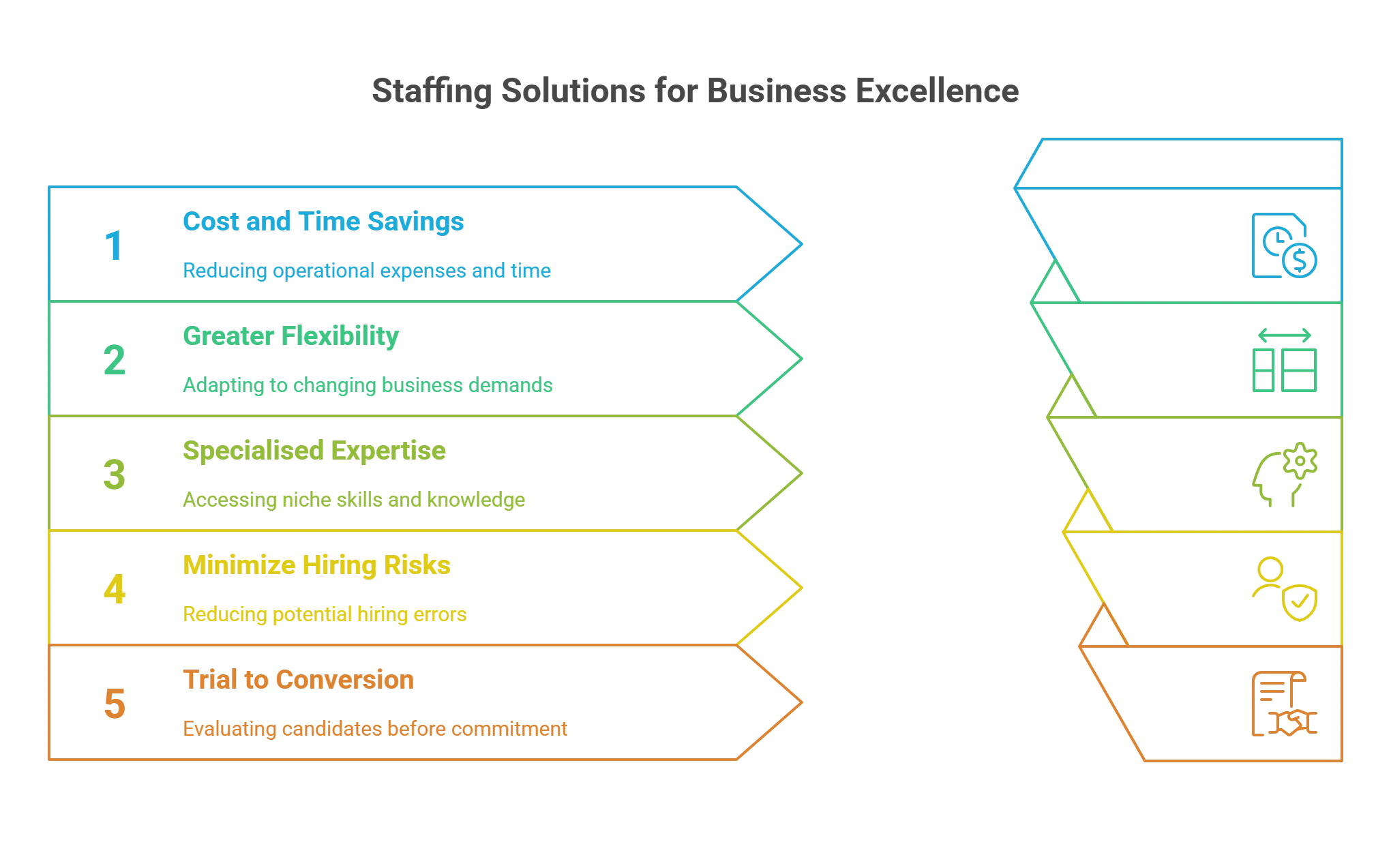
How Staffing Solutions Drive Business Excellence?
Staffing solutions are pivotal in helping businesses achieve excellence and outperform their competitors. Let’s examine the key ways in which quality staffing solutions impact business performance and success:
1. Cost and Time Savings
Staffing agencies handle all hiring-related tasks, including candidate sourcing, screening, and interviewing. By outsourcing these processes to experts, businesses can focus on their core activities and save money.
By utilizing staffing solutions, companies can streamline their recruitment process, access a larger talent pool, and quickly fill open positions. This talent acquisition agility and efficiency allow businesses to scale up or down as needed, reducing operating costs during fluctuating workloads.
2. Greater Flexibility
Internal Staffing solutions allow businesses to rapidly scale their workforce up or down according to changing market conditions and demands.
This flexibility empowers businesses to navigate market fluctuations, try new strategies, and pursue opportunities without significantly increasing their permanent headcount.
Adapting and responding quickly to changing circumstances gives businesses a competitive advantage.
3. Specialised Expertise
Access to specialized expertise is a game-changer for businesses aiming for excellence. Staffing agencies have extensive networks and industry knowledge that allow them to source skillful professionals faster for time-sensitive projects, seasonal demands, and specific assignments.
By leveraging the specialized expertise provided by staffing solutions, businesses can cost-effectively supplement their internal capabilities and skill gaps. Expert temporary workers can enhance performance and drive business excellence by augmenting internal teams and resources.
4. Minimize the Risks of Hiring
Hiring comes with inherent risks, such as making costly hiring mistakes or failing to comply with employment laws. Internal Staffing solutions help mitigate these risks by conducting thorough background checks, verifying qualifications, and ensuring compliance with relevant regulations.
By partnering with staffing agencies, businesses can minimize the chances of costly hiring mistakes, protect their reputation, and make informed decisions when selecting candidates. This risk reduction contributes to business excellence by ensuring only qualified and suitable individuals are on board.
5. Trial to Conversion Options
Staffing solutions often offer trial periods for hires, allowing businesses to evaluate candidates’ performance and suitability before hiring them for permanent positions. This trial period provides an opportunity to assess a candidate’s cultural fit within the organization and their ability to deliver results.
By utilizing trial periods, businesses can reduce the risk of making poor long-term hires, ultimately contributing to business excellence. Companies can evaluate a candidate’s performance in real work situations, minimizing the potential negative impact of a mismatch between the candidate and the role.

Top 5 Tips for Reducing Turnover Rates with Complete Staffing Solutions
Employee retention is vital for organizational success. By implementing these tips, you can create a supportive and engaging work environment that boosts loyalty and commitment among your team.
1. Implement Comprehensive Onboarding Programs
A well-structured onboarding process is essential for retaining employees. Research shows that great onboarding improves employee retention by 82%.
To create a positive onboarding experience, ensure new hires feel welcomed, informed, and supported from day one. Provide them with the necessary tools, resources, and guidance to integrate smoothly into the organization. This includes clear job expectations, introductions to team members, and opportunities to ask questions and seek feedback.
A positive onboarding experience sets the tone for long-term engagement and commitment to the company’s goals and values.
2. Offer Competitive Compensation and Benefits
Competitive salaries and attractive benefits packages are essential for retaining top talent in today’s competitive market. 60% of employees consider compensation a very important factor in job satisfaction.
Review and benchmark your compensation packages against industry standards to ensure they remain competitive. Enticing benefits such as healthcare, retirement plans, and professional development opportunities can enhance employee satisfaction and loyalty.
3. Provide Opportunities for Career Development
Employees appreciate companies that prioritize their growth and advancement. A study found that 94% of employees would stay longer at a company if it offered learning and development opportunities. I
Implementing training programs, mentorship initiatives, and clear career paths demonstrates a commitment to employee advancement. By offering opportunities for skill enhancement and career progression, you can cultivate a motivated and engaged staffing workforce that is more likely to stay with the company long-term.
4. Nurture a Positive Work Culture
Employees who feel supported and valued are more likely to be productive and engaged. Encourage open communication, recognize and celebrate employee achievements, and promote a healthy work-life balance.
A supportive and inclusive work environment where employees feel valued and respected contributes to higher morale, productivity, and overall job satisfaction.
5. Seek Employee Feedback Regularly
Employee feedback is a valuable tool for understanding their needs, concerns, and suggestions for improvement. 75% of employees believe that feedback is important for their performance and career development.
Conducting regular surveys, one-on-one meetings, and focus groups allows you to gather insights directly from your team. By listening to and acting on employee feedback, you can address issues proactively, boost morale, and create a more engaging workplace.
In addition, consider implementing employee retention strategies such as flexible work arrangements, recognition programs, and mental health support to enhance employee satisfaction further and reduce turnover rates.

Considerations When Hiring a Staffing Company
While internal staffing solutions provide numerous advantages to businesses, it’s essential to consider several factors before partnering with a staffing agency. These considerations can help businesses make informed decisions and ensure a successful collaboration:
1. Reputation and Experience
When selecting a staffing solutions company, it’s crucial to consider their reputation and experience.
Look for agencies with a solid track record and positive client testimonials. Research their industry affiliations and associations to ensure they have the expertise and credibility to deliver quality services.
2. Industry Knowledge
Each industry has its unique challenges and skill requirements. Ensure that the staffing solutions provider you choose is well-versed in your industry.
They should deeply understand the skills, qualifications, and experience required for various roles within your organization.
3. Service Range
Evaluate the services offered by the staffing agency. Do they provide temporary staffing, permanent placements, or both? Can they fill vacancies for specialized positions?
Understanding their service range ensures their offerings align with your specific staffing needs.
4. Selection Process
Inquire about the staffing company’s screening process and talent acquisition strategies. Gain insights into how they source and evaluate candidates, ensuring they align with your needs.
A robust selection process increases the likelihood of finding job-fit candidates who can contribute to business excellence.
5. Client Support
Consider the level of support the staffing agency provides to its clients. Ensure they have dedicated points of contact to address your concerns or queries promptly.
Inquire about additional services they offer, such as onboarding assistance and training programs. The level of client support provided by the agency should align with your needs and expectations.
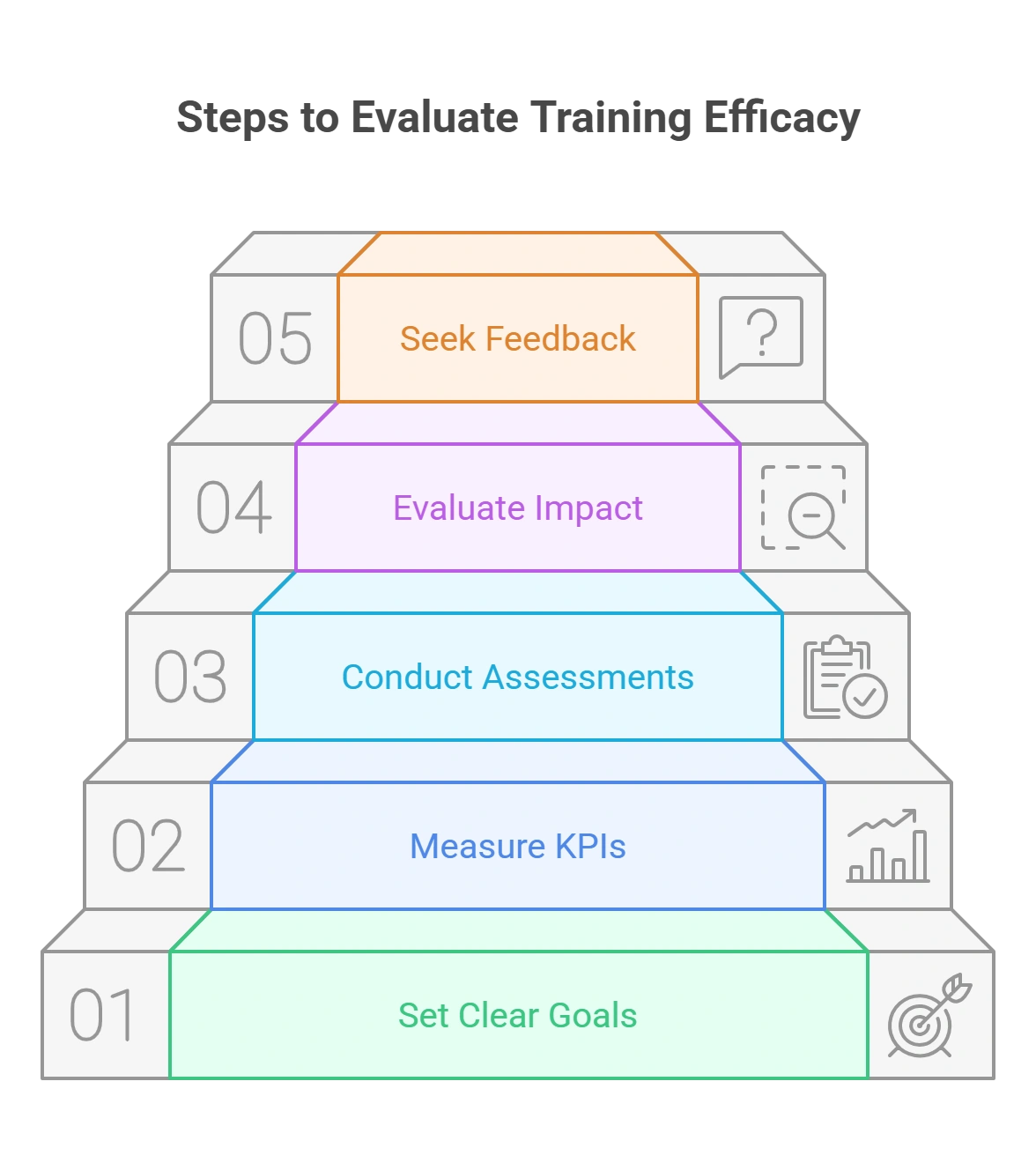
Five Tips to Evaluate the Efficacy of Staff Training
Suppose you carried out a full-blown staff training program in your organization. But the question is – how do you find out whether your efforts are paying off or not? Well, here are some simple training evaluation methods;
1. Set Clear Goals
Before you kickstart the training program, set a clear agenda as to why you’re conducting it in the first place. List down a few goals you want to achieve by the end of it – just make sure they are realistic and measurable. This will give you a clear picture of the progress and help with effective employee training evaluation.
2. Measure KPIs
KPIs, or “Key Performance Indicators,” are extremely useful tools in measuring the effectiveness of training and development, including staff training. So, set a few KPIs you can measure post-training to check how well it went. A few basic ones could be skill improvement, time-to-competency, retention rate, customer satisfaction, etc.
3. Conduct Assessments
Another foolproof method to check the training’s effectiveness is conducting a practical assessment. Once the program is wrapped up, call for a quick test of your employees. The test should revolve around evaluating the skills that were specifically focused on during the training. The results will show you the difference.
Furthermore, companies can utilize personalized, interactive assessments to get an accurate picture of an employee’s understanding.
4. Evaluate Impact
Research says organizations with robust training programs witness a 218% surge in income per employee. As such, a good employee training course has multiple other positive aftermaths, like a reduction in employee turnover and an increase in employee engagement. Evaluate these internal impacts over an extended period to measure the efficacy of staff training.
5. Seek Feedback
Last but not least, actively seek feedback from managers and their team members to acquire their views on the staff training program. It will help you understand how effective the recent one was and what areas need to be addressed in the next session.
Conclusion
Remember, improved employee experience is key to facilitating higher financial goals. Not only that! It also attracts top performers and significantly improves retention. Furthermore, referrals from present employees are an effective new-hire solution. That is why turnover reduction strategies retain existing workers and improve the chances of recruiting their skilled connections.
Hurix Digital provides complete staffing solutions by bridging the gap between companies in need of staff and individuals looking for job opportunities. We offer services that can accelerate the hiring process, reduce the workload of current employees, and provide flexibility in hiring.
By partnering with us, organizations can benefit from staffing solutions that help them find the ideal candidates for crucial job positions efficiently and effectively. Contact us today for more information.
Summarize with:

Vice President & SBU Head –
Delivery at Hurix Technology, based in Mumbai. With extensive experience leading delivery and technology teams, he excels at scaling operations, optimizing workflows, and ensuring top-tier service quality. Ravi drives cross-functional collaboration to deliver robust digital learning solutions and client satisfaction
 Upcoming Masterclass | Build an Army of Brand Evangelists using Training & Development | November 20th, 8:30 AM PDT | 11:30 AM EDT | 10:00 PM IST
Upcoming Masterclass | Build an Army of Brand Evangelists using Training & Development | November 20th, 8:30 AM PDT | 11:30 AM EDT | 10:00 PM IST
